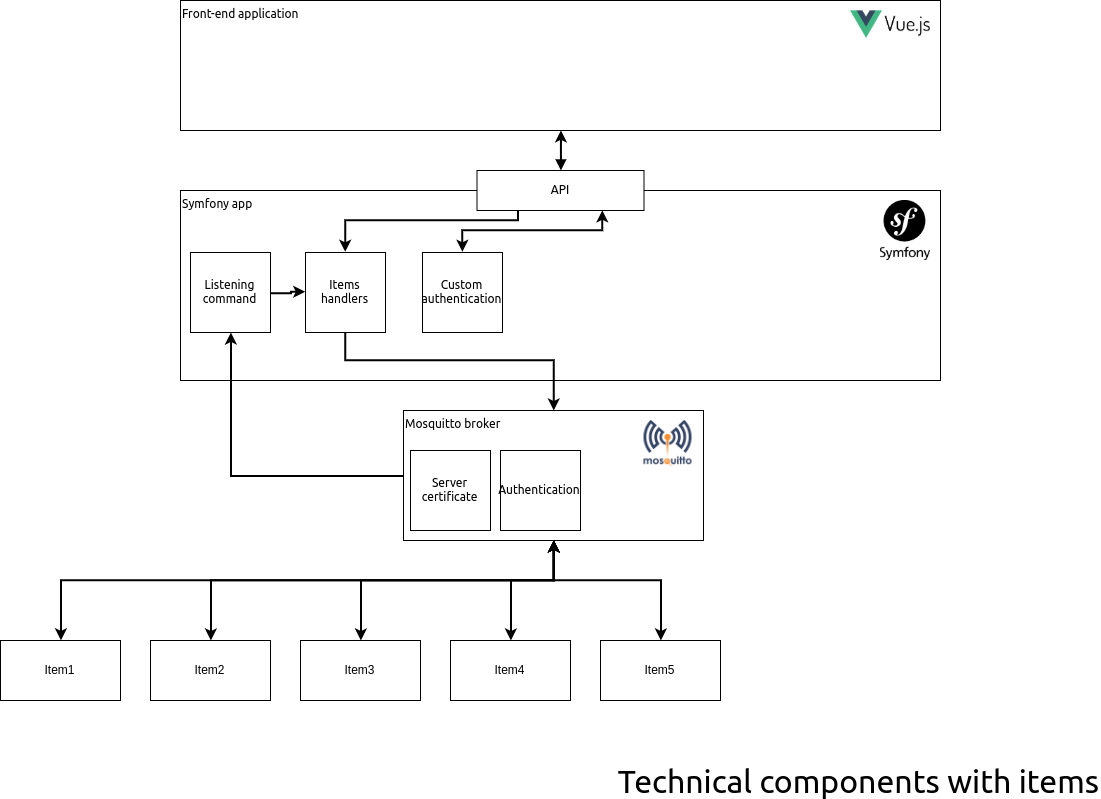Domofony presentation
Home automation
On my previous attempts on DIY home automation, I used the excellent openHAB. At first glance, it seemed to have everything I looked for in an home automation context :
- Completely open-source
- Technology and vendor agnostic : one of the most important thing, I didn't want to rely on proprietary technology to build this system. Everything has to be transparent from ground to roof, and modifiable to ensure long-term usage and adaptation
- Ability to program for serious work : it's utterly important to me that real programmation feature would be available. Way I do things doesn't match with a click-land configuration job. Using Xtend (because openHAB written in Java), it allows to create programs to drive your installation.
So why change? Some cons :
- I realized after usage that all the stuff embedded (item branching with technologies, configuration...) simply wasn't for me
- Xtend implementation in this usage, though really neat, does not allow things I wanted (such as script reuse accross handlers...)
- All the Java stuff creates pressure on underlying hardware, thus forcing to have something powerful (old Raspberry Pis was not so good)
Don't misunderstand me : OpenHAB is great job used y thousand of people accross the world. I just needed something else.
Domofony
Domotique + Symfony = Domofony.
Domotique is the french word for home automation. First thing to know, I created this project for myself, and share it a good practice, but at start, not all things will be usable by everyone (such as the front-end app I plan to develop tailored to my use).
This is a solution provided by a developer for developers. Exit click-land, all configuration is done in YAML.
Technical components

All part showed on above layout will be described and detailed in future posts. That being said, below is a quick description for bigger parts.
Front-end application
This is the application allowing user to interact with the system. It will consume REST API exposed by the server application.
Mosquitto broker
The system relies so far on MQTT protocol (here a protocol tour in french) for exchanges between central system and items. This protocol is ideal regarding it's asynchronous sequence and its lightweight. Security is not left aside, although TLS certificate usage means items must be more powerful than simple microcontrollers.
Note : an item is the end-device, such as sensor or actuator (or both). In my home automation system, this is mostly SBC or ESP series microcontrollers
Future posts will handle in details items, Symfony application, Mosquitto broker & client configuration and front-end application.